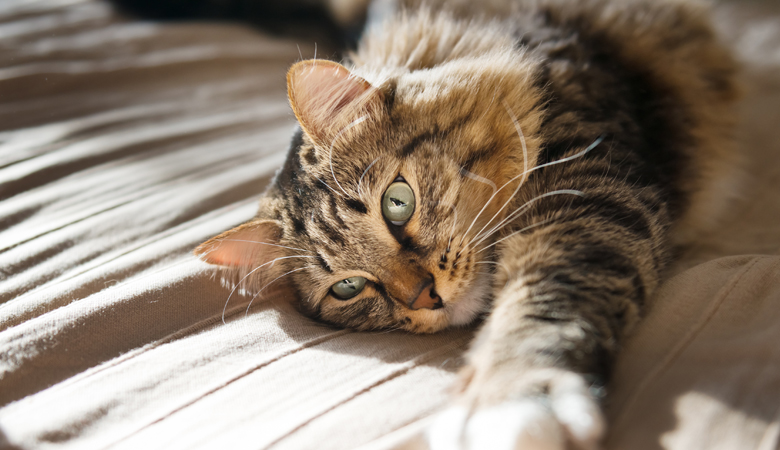Cats with fever
Written by Indy |
Just like humans, cats can also get a fever. But what exactly is a fever? How can you recognise it? And what should you do if your cat has a fever? You’ll find all the answers in this article about fever in cats.

When does a cat have a fever?
Cats are warm-blooded animals and have a constant body temperature. A normal temperature ranges between 38 and 39.5 degrees Celsius, which is higher than in humans. When a cat has a fever, its body temperature is elevated. This temperature can already increase by 0.5 to 1 degree due to stress or physical exertion.
How can you tell if a cat has a fever?
A fever is not a disease, but a defence mechanism of the body in response to, for example, an infection. However, your cat’s body temperature can also be elevated when it is unable to lose excess heat properly, which is called overheating. In addition to overheating, temperature can rise due to exertion, stress, increased metabolism or hormonal changes. So, an elevated body temperature is not always the same as a fever.
You can measure your cat’s body temperature using a thermometer. This is done rectally. For an accurate reading, the thermometer should be inserted deep enough — around 2 cm. To make this easier, you can lubricate the thermometer with something like petroleum jelly. Only read the temperature once the thermometer has finished measuring.
Symptoms of fever in a cat
- Shivering
- Increased heart rate
- Rapid breathing
- Muscle weakness
- Reduced appetite
- Elevated body temperature
- Disrupted fluid and electrolyte balance
Warm ears in your cat can be a sign of fever, but they can also simply result from lying in the sun or feeling a bit warm temporarily. In that case, it’s good to help your cat cool down.



